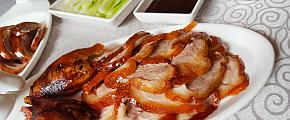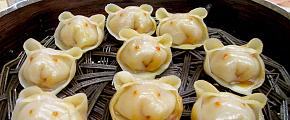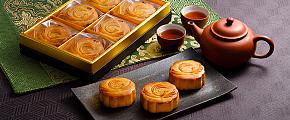Drinks and Snacks of China - Bean Curd, Preserved Eggs, Roast Duck
There are so many special foods and snacks in China, in this article, you will get some quick facts about 4 featuring snacks, which are Bean Curd, Preserved Eggs, Roast Duck, and Eight-treasure pudding.
Bean Curd (Tofu/Doufu)
Bean curd may be justifiably called a great invention in old China. An ancient work on medicinal herbs mentioned bean curd in these words: "The method of making doufu dates back to Liu An, the Prince of Huainan. It is made of soya beans, either the black or the yellow variety." Liu An (179-122 B.C.) was a grandson of Liu Bang, the founding emperor of the Han Dynasty. Legend has it that the prince, in his search for a panacea to help him achieve immortality, experimented with soya beans and bittern and through the chemical reaction, stumbled on the earliest bean curd.
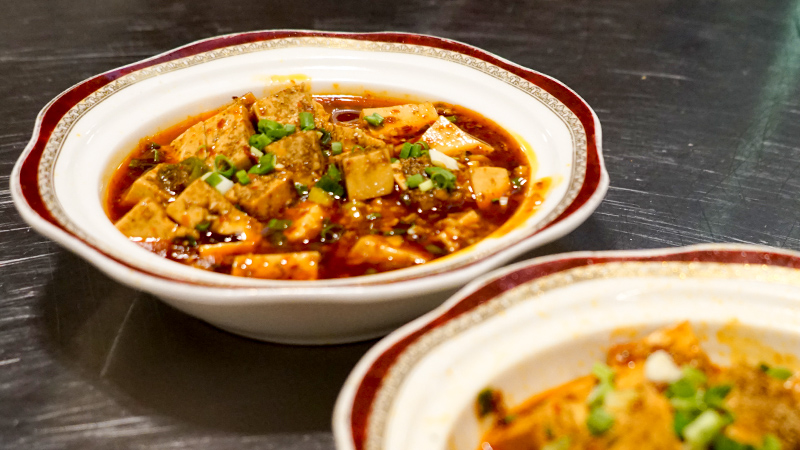 Mapo Tofu
Mapo Tofu
That was more than 2,100 years ago. An analysis of 100 grams of bean curd shows that it contains water(85 grams), protein(7.4 grams), fat(3.5 grams), calcium(277mg), phosphorus(57mg), and iron(2.1 mg). As a food of high nutritive value, it has met with widespread acclaim. Many products can be made with soya beans as the principal material. They include, in addition to bean curd of various styles, dried bean curd, bean milk and its skin, jellied bean curd, bean curd sheets and noodles, and bean milk powder.
An absolute must for a first-time visitor to Beijing is the Peking Roast Duck, which is mostly prized for the thin, crispy skin with authentic versions of the dish serving mostly the skin and little meat.
Fermented Bean Curd (Furu)
Fermented bean curd is often served as part of Chinese breakfast.
As the name suggests, it is made from bean curd and is usually available in two different varieties, white and red. Bean curd, as told by the previous article, first appeared as early as the Western Han Dynasty (206 B.C-25 A.D.), but fermented bean curd had to wait for several hundred years. A story tells about a bean curd tradesman of the Tang Dynasty (618-907), whose business was rather slack at the time. His bean curd began to become moldy and, to prevent it from further deteriorating, he sprinkled fine salt over it and put it away in a jar. As he opened the jar a few days later, he found to his surprise that the salted bean curd, instead of having gone bad, greeted him with an inviting smell he had never known before. Thus the first lot of fermented bean curd was born. This food has since become very popular in China, and it is made by a rather simple process. Fresh bean curd is cut into cubes mixed with nodule mold and left to ferment for 2-3 days until a moldy coating appears on the surface. (Made at home, the bean curd may be left to ferment by itself, but this takes about 10 days.) The bean curd is then salted, seasoned with other condiments, and sealed in jars. It is put away and kept for 4-5 months to become savory and marketable.
Preserved egg, also known as century egg, is considered a delicacy in the West but is quite common in the Far East.
The proper Chinese name for preserved eggs is Songhua or Songhua Dan (pine-flower eggs) - so called because when shelled, these solidified but semitransparent eggs show flowery patterns like pine needles inside. The more and the prettier the patterns, the higher the quality of the egg. Songhua is normally made of duck eggs. The traditional folk recipe was to soak the fresh eggs in quicklime mixed with salt and water. Now the eggs are for 40-60 days, in a liquid consisting of caustic soda, salt, and tea leaves. Another method followed in a certain region is to wrap the unshelled eggs individually in a clay mixture containing quicklime, salt, and grain husk, and they become eatable in three weeks. Some Westerners have been told to call them "hundred-year-old eggs" or even "century eggs".
This is definitely an exaggerated misnomer, which has unfortunately caused some visitors to fight shy of this tasty and peculiar Chinese food. The preserved egg, when shelled, is soft and smooth but at the same time resilient, its yolk is darkened and gelatinous. Because of the presence of sodium hydroxide and the small amount of ammonia generated by the egg itself during the preparation, the finished egg may sometimes carry a faint alkaline or astringent taste. This may be easily removed with a little vinegar with minced ginger root mixed in the soya sauce sprinkled on the cut pieces. This also helps to enhance the tastiness of Songhua and as a matter of fact, is the usual way the egg is served.
Roast Duck (Kaoya)
The Beijing roast duck is a dish well-known among gastronomes the world over. To cook ducks by direct heat dates back at least 1,500 years to the period of the Northern and Southern dynasties when "broiled duck" was mentioned in writing. About eight hundred years later, Husihui, an imperial dietician to a Mongol emperor of the Yuan Dynasty, listed in his work Essentials of Diet (1330 A.D.) the "grilled duck" as a banquet delicacy. It was made by heating the duck - stuffed with a mince of sheep's tripe, parsley, scallion, and salt - on a charcoal fire. Today the Beijing roast duck (or "Peking duck", as it has been called) is made of a special variety of duck fattened by forced feeding in the suburbs of Beijing. After the duck is drawn and cleaned, the air is pumped under the skin to separate it more or less from the flesh.
A mixture of oil, sauce, and molasses is coated all over it. Thus, when dried and roasted, the duck will look brilliantly red as if painted. Perhaps that is why it is known among some Westerners as the canard laqué or "lacquered duck".
The two most famous restaurants in Beijing that serve this specialty are Quanjude and Bianyifang, both of which have a history of over a hundred years and have an extensive network of chain stores.
Before being put in the oven, the inside of the fowl is half filled with hot water, which is not released until the duck has been cooked. For oven fuel, jujube-tree, peach, or pear wood is used because these types of firewood emit little smoke and give steady and controllable flames with a faint and pleasant aroma. In the oven, each duck takes about forty minutes to cook, and the skin becomes crisp while the meat is tender. In the restaurant, the roast duck, after being shown whole to the customers, is served in slices, which are eaten rolled in thin pancakes with a dish of Tianmianjiang (a sweet sauce made of fermented flour) and scallion(or cucumber) cut in thin lengths. Few people, if any, could resist the temptation of the crisp and delicious taste of the Beijing roast duck. Before the duck appears, however, various warm or cold dishes are often served, made of kidneys, hearts, webs, wings, and eggs, all from the duck. Even duck tongues can be prepared into very tasty dishes, and the skeleton of the eaten duck normally goes into a soup that finds few equals. A highly experienced chef of a duck restaurant can produce an "all-duck banquet" of over eight dishes made of different parts of the fowl.
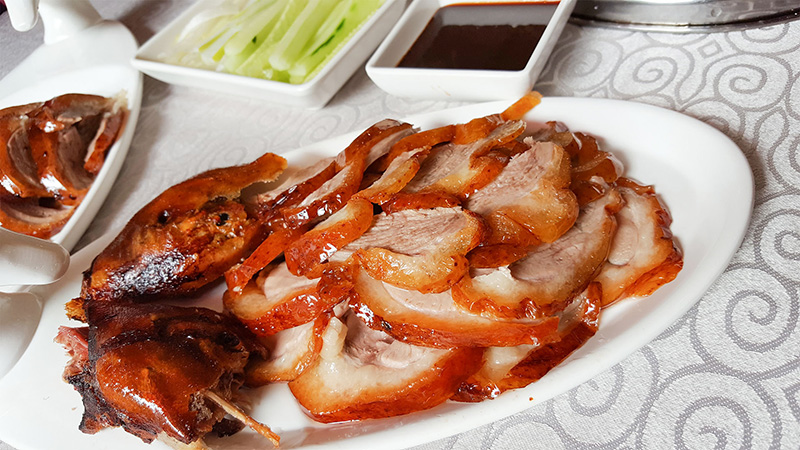 Roast Duck (Kaoya)
Roast Duck (Kaoya)
Eight-Treasure Rice Pudding (Babaofan)
Babaofan, a kind of rice pudding, is a well-known traditional Chinese dessert, cooked with sticky rice and 8 different freshly dried fruits.
The Eight-treasure Rice Pudding is made from glutinous rice supplemented with red jujubes, lotus seeds, lily, seeds of Job's tears, ginkgo, dried longan pulp, and finely cut green and red plums. These ingredients may also be substituted with walnut meat, haw jelly, raisin, peanut, and cherry. The Eight-Treasure Rice Pudding is used as a banquet course for its pleasant color, fragrance, taste, and shape. In some places, brown sugar is melted with burning liquor and as the icing for the Eight-treasure Rice Pudding in some places. This practice of burning Liquor to melt brown sugar originated in the story of the eight scholars recruited by King Wen of the Western Zhou Ds nasty in present-day Shaanxi Province to conquer the tyrannical King Zhou of the Shang Dynasty.
These scholars, included Bo Da, Bo Shi, and Zhong Tu. Shu Ye. and Shu Xia, indeed played a positive role in toppling the Shang Dynasty. When the triumph over King Zhou was celebrated in the Zhou capital city of Hao, the chefs of the imperial kitchen concocted a kind of pudding made from eight treasured ingredients, and topped it with fiery-colored haw juice to symbolize the "eight Zhou scholars burning King Zhou of Shang to death". The Eight-treasure Rice Pudding thus came down through the generations as a favored course of the Chinese banquet. According to Chinese tradition, the Eight-treasure Rice Pudding is served and eaten on the 7th of the 1st lunar month to mark the end of the Spring Festival and the beginning of the New Year.
Tanghulu, consisting of candied fruits on bamboo skewers, is a popular traditional winter snack in northern China, especially in Beijing, and particularly for children.
Toffee Fruits (Tanghulu)
Toffee fruits on sticks are popular in the northern parts of China, such as Beijing, Xi'an, Pingyao, Datong, Luoyang, etc. They are made of various kinds of small fruits - haws, crabapples, water chestnuts, grapes, or yam. First, the fruits are trimmed and cleaned, they are then strung one after another on a slender bamboo stick and coated in a bath of rock sugar syrup. As soon as the toffee hardens, the Tanghulu is ready. A Tanghulu is generally made of six or seven of such fruits or, in the case of yam, one length of 5 or 6 inches. With the crisp sugar coating, it looks bright and inviting, and it generally tastes sweet and sour. Toffee fruits on sticks appear on street corners in autumn and winter sold by hawkers, they are welcomed and enjoyed by both old and young.
Related Posts You May Like
What Our Clients Say
"Great Customized Service", "Trip of A Lifetime", "Exceed All Expectations"

